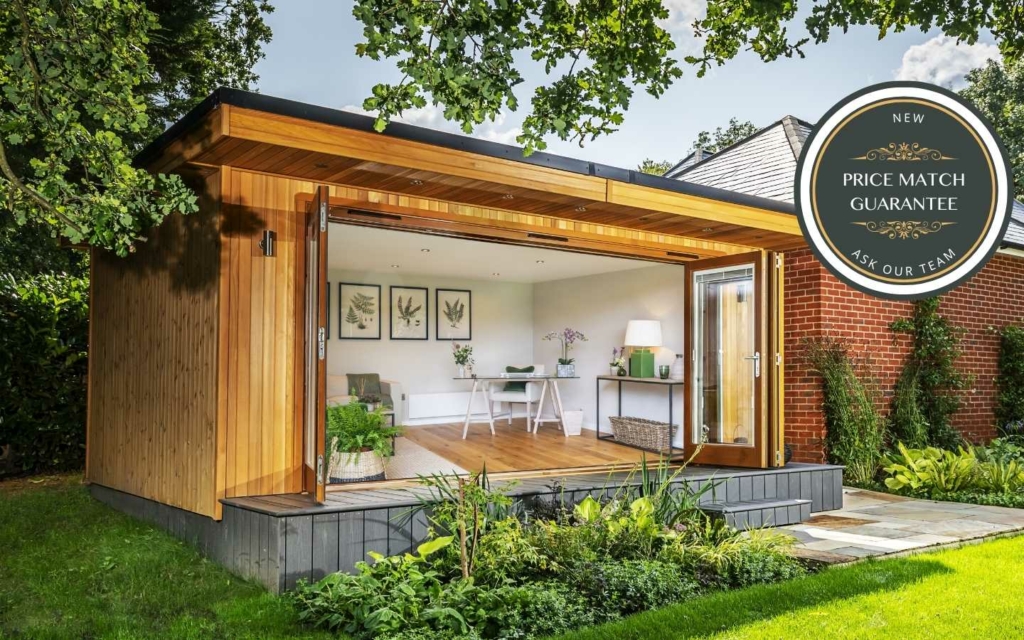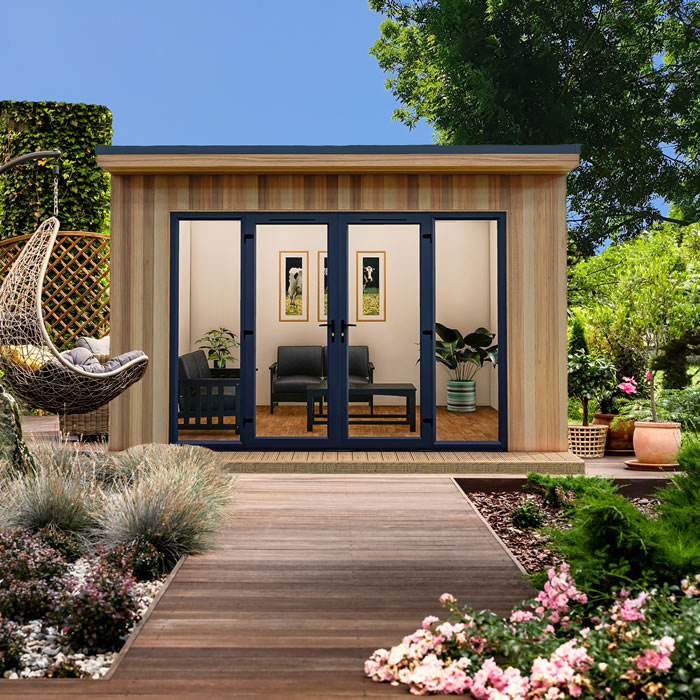Excellent News On Planning Permission On Garden Conservatories
Excellent News On Planning Permission On Garden Conservatories
Blog Article
What Planning Permits Are Required For Garden Rooms As Well As Other Structures?
When you are considering the construction of conservatories or garden rooms outhouses, garden offices and even outhouses, size restrictions can often determine whether planning permission is needed. Here's a list of the dimensions which could force you to seek planning permission.
Planning permission is normally required for detached outbuildings when its total area, including any existing outbuildings and the surrounding area house more than 50%.
Height limitations:
Single-story structures. The maximum eaves can't be more than 2.5 meters.
If a building is located within 2 meters of the property boundary, it must not exceed 2.5 meters.
Floor Area:
Even if planning approval is not needed, structures that have more than 30 square meters may need to be approved according to the building regulations.
Proximity to Boundaries:
If the structure is located within 2 meters of the border Planning permission is usually required if the height exceeds 2.5 meters.
Building Use
While it's not a strictly defined limitation on size, the planned use of the garden room can impact whether planning permission is required. For example, if the space is going being used as a residences or office space the planning permission is more likely to be required.
Permitted Development Rights:
In the case of Permitted Development Rights (which allow certain types of work to be carried out without the need for a full planning application), specific size limits and conditions apply. These rights vary depending on whether the property is located in a conservation zone or is under other restrictions.
Conservatories & Extensions
For an extension of a single story the maximum depth for a single-story rear extension is usually 4 metres for detached houses and 3 metres for semi detached or terraced houses. Under the Neighbour consultation program, these limits may be increased to 8 meters or 6 meters respectively.
The height limit for a rear extension with a single story is 4 metres.
Side Extensions
For side extensions, the width should not exceed half the width of original home The maximum height must not exceed 4 meters.
Volume restrictions:
Planning permission may be required in specific zones, like conservation areas or Areas of Outstanding Natural Beauty. Any new construction that increases volume of original home by more than 10% (or 50 cubic meters) or the greater of these figures (whichever is greater) is subject to approval for planning.
Front Extensions:
Planning permission is often required to extend the extension beyond the front that faces the road of the original home.
It is crucial to inquire with your local planning authority because rules can vary depending upon the local council or property condition. Building regulations approval may be required even when planning consent is not needed. This could be for structural integrity or safety reasons. Read the best insulated summer house with electricity for blog tips including what is a garden room, outhouse uk, costco outhouse, Tring garden rooms, garden rooms brookmans park, small garden office, how to lay decking on soil, garden rooms in St Albans, ground screws vs concrete base, garden rooms and more.
What Permits Are Required For Garden Rooms And Other Structures Related To Neighbourhood Concerns?
If you're planning to construct conservatories, garden offices outhouses, garden offices or outhouses, the concerns from your neighbors will decide whether planning permission is needed. Here are the key factors to take into consideration overlooking and privacy:
If the building will overshadow neighboring properties which could result in an invasion of privacy the planning permission will likely be needed. This is to ensure that the new building does not adversely affect the living conditions of adjacent residents.
Light loss and shadowing
A planning permit is typically required if a proposed building could result in significant light loss or overshadowing to nearby homes. The local authority for planning evaluates the impact of sunlight on neighbouring homes.
Noise and Disturbance
If the garden room or extension is going to be utilized for activities that produce noise (such as the home office that has clients the office, a workshop or music room) the planning permission is required. This will ensure that the noise is not too loud and does not disrupt the surrounding neighborhood.
Visual Impact and Character:
The size, design and style of a brand new building must fit in with the surrounding neighborhood. Planning approval ensures that the development is appealing to the eye and does not interfere with the aesthetics of the neighborhood.
Boundary Proximity
The construction of structures within two metres of a boundary or any structure that is higher than 2.5 metres may require planning permission. This is to avoid conflicts and adverse impacts on neighbouring properties.
Access to shared resources as well as Rights of Way
It is important to get planning permission if construction work is expected to impact shared access routes or rights-of way. This will ensure that they aren't negatively impacted or blocked.
Opposition from neighbors:
The right to consult with neighbors is a crucial element of the planning process. Planning authorities take into consideration objections from neighbors when deciding whether permission is granted.
Effect on the value of property
Although it's not always an issue of primary importance, modifications that may affect the property value of adjacent homes could impact on the need to obtain permission to plan. Local authorities will consider the effect of these changes when making decision.
Covenants and Deed Restrictions:
The property could be subject to covenants or restrictions in deeds which must be abided by regardless of approval for planning. Legal agreements can define what kind of construction may be allowed and not, which can affect the peace of the neighborhood.
Construction Disturbance:
Permission to plan may be granted in order to resolve concerns about disruptions that may occur during construction, such as traffic, dust and noise. There could be conditions placed on the construction to minimize the impact it has on neighbors.
Impact on the infrastructure
Planning approval is required if the proposed structure is expected to put additional strain on local infrastructure including parking, drainage and roads.
Community Consultation
In some instances, a greater community-based consultation is needed particularly if the project is large or controversial. This allows for the process to be more democratic that takes into consideration the viewpoints of the community.
In short, concerns about the neighborhood play a major role when deciding whether the construction of a conservatory, garden room, outhouse, garden office or extension is approved. To make sure that the proposed development will not have an adverse impact on the quality of life and privacy and the quality of lighting, noise levels and the general character of the area, it's important to check the plans. Consultation with the local authorities for planning and engagement with neighbors will assist in reducing these concerns. Check out the recommended summerhouse heater for more info including small garden office, herts garden rooms, Tring garden rooms, outhouses for garden, composite garden rooms, how to lay decking on soil, how to lay decking on soil, how to get power to a garden room, Tring garden rooms, garden outhouse and more.
What Planning Permissions Are Required For Gardens, Outdoor Spaces, Etc. In Terms Of Appearance And Design?
Do you plan to build a garden office, conservatories or outhouses? The look and design of the building will play an important factor in determining if planning permission is needed. These are the main factors to take into consideration.
Planning permission may be unnecessary when you can construct the structure within the permissible development rights on your property. There are however specific design and look criteria that must meet.
Size and Scale
The new structure should be in proportion to the surrounding structures. For structures that are larger than the permitted development rights the planning permission is required.
Mass and Height:
The mass and height of the new structure should be consistent with the size of the property as well as the surrounding buildings. Planning permission is typically required for structures that exceed height limits or that are out of scale with surrounding buildings.
Materials and Finishes
The finishes and materials selected should complement the home and surrounding buildings. If the materials chosen do not fit with the local appearance and character, planning permission may be required.
Design Harmony:
The style of the proposed structure must be compatible with the style and appearance of the property or buildings surrounding it. Planning permission is required when the design proposed is not in harmony with the local style and character.
Roof Design:
The style of the roof should complement both the architecture of the building and of buildings surrounding it. It may be necessary to seek planning permission in the event that the roofing plan is not compatible with the local style or design.
Fenestration Windows and Doors:
The layout and design of windows and entrances must be compatible with the existing building and surroundings. The proposed fenestration might require planning permission if it is not compatible with the local appearance and the character.
Facade Treatment
Facades must be designed in a way that is harmonious with surrounding structures and existing properties. Planning permission might be required if the proposed facade treatment isn't in accordance with the local character and appearance.
Landscaping and Surroundings
The landscaping surrounding the new structure should be compatible with the existing landscaping and buildings. Planning permission may have to be sought if the landscaping does not fit with the local style.
Visual Impact
Visual impact on the surrounding area of the proposed building must be limited to a minimal level. A planning permit could be required for any structure that has a negative effect on the area.
Heritage and Conservation Areas
If the building is located in a heritage or conservation area, stricter standards for appearance and design may apply. Planning permission might be required for any building that does not comply with these standards.
Architectural and Planning Guidelines:
Local planning authorities often issue guidelines for aesthetics and design. Planning permission could be required if the proposed structure is not in accordance to these standards.
In summary, the design and appearance of a structure can determine whether or not planning permission is granted. It is crucial to speak with the local planning authority early in the planning process to ensure that the design is in conformity with local character and appearance guidelines and to determine if planning permission is required. Take a look at the top 5 counties garden rooms for more info including outhouse builders, garden rooms brookmans park, outhouse garden, outhouses for garden, what size garden room without planning permission, insulated garden buildings, composite garden rooms, outhouse garden, outhouse buildings, garden out house and more.